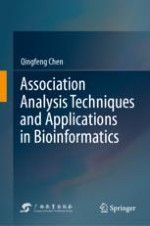2024 | OriginalPaper | Buchkapitel
4. Computational Linguistics and Biological Sequences in Artificial Intelligence
verfasst von : Qingfeng Chen
Erschienen in: Association Analysis Techniques and Applications in Bioinformatics
Verlag: Springer Nature Singapore
Aktivieren Sie unsere intelligente Suche, um passende Fachinhalte oder Patente zu finden.
Wählen Sie Textabschnitte aus um mit Künstlicher Intelligenz passenden Patente zu finden. powered by
Markieren Sie Textabschnitte, um KI-gestützt weitere passende Inhalte zu finden. powered by
